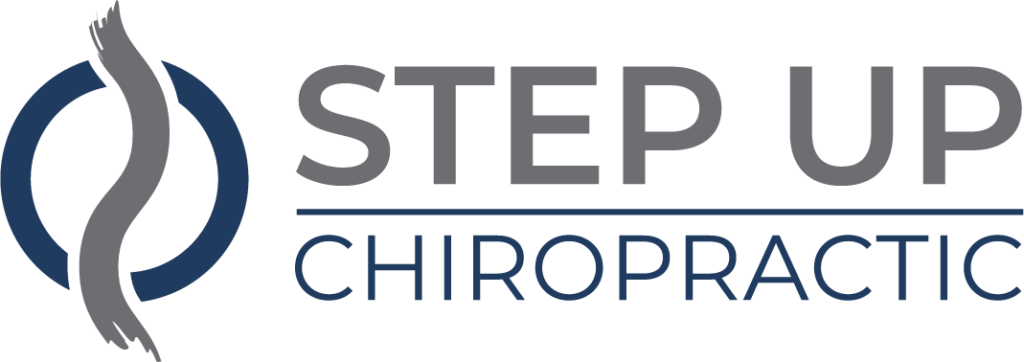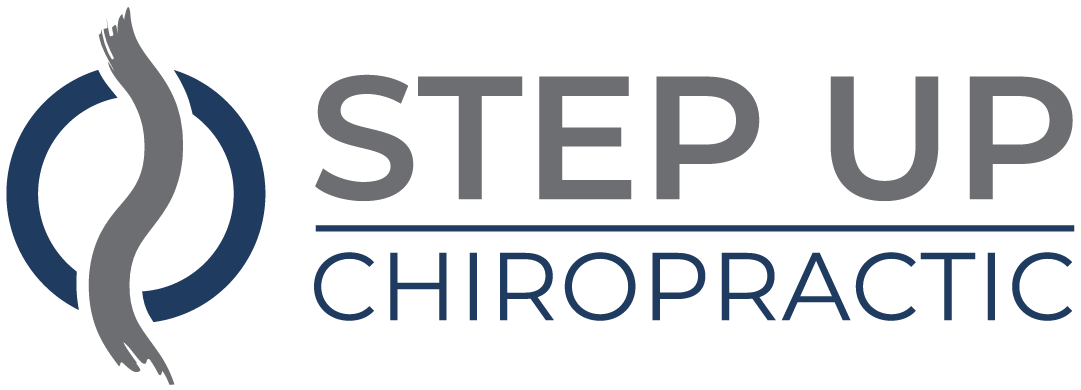If you're dealing with persistent neck pain, you're not alone, and you might be surprised to learn that surgery isn't your only option. There are several effective methods to relieve discomfort without invasive procedures, ranging from targeted exercises to simple adjustments in your daily routine. You can explore techniques like heat therapy, ergonomic setups, and even mindfulness practices that can make a significant difference. But before you decide on the best approach for you, it's important to contemplate a few key factors that could change your experience entirely.
Stretching Exercises
When you're dealing with neck pain, incorporating stretching exercises into your daily routine can make a significant difference. These exercises help relieve tension, improve flexibility, and promote better posture, all of which can reduce discomfort in your neck.
Start with gentle neck stretches, like the side-to-side tilt. Sit or stand comfortably, then slowly tilt your head toward one shoulder until you feel a stretch. Hold this position for about 15-30 seconds, then switch sides. Repeat this a few times to help release tight muscles.
Next, try the chin tuck. This exercise strengthens your neck muscles while promoting good alignment. While seated or standing, gently tuck your chin toward your chest, drawing your head back as if you're trying to make a double chin. Hold for a few seconds, then relax. Do this several times throughout the day to keep your neck engaged without straining it.
Don't forget about shoulder rolls. This simple movement can alleviate tension that accumulates in your neck. While sitting or standing, roll your shoulders up toward your ears and then back down in a circular motion. Repeat this for about 10 repetitions, and you'll likely feel a sense of relief.
Incorporating these stretching exercises can enhance your neck's mobility and comfort. Remember to listen to your body; if any stretch causes pain, ease back and consult a healthcare professional.
Regular practice can lead to significant improvements in your neck pain over time.
Strengthening Workouts
Strengthening workouts are essential for alleviating neck pain and preventing future issues. When your neck muscles are strong, they support your head better, reducing strain on your spine. You'll want to focus on exercises that target the neck and upper back muscles.
Start with isometric exercises, where you press your head against your hands without moving it. For instance, place your palm on your forehead and push against it for about 5 seconds, then switch to the back of your head. This helps build strength without excessive movement.
Next, try neck flexion and extension exercises. Gently lower your chin toward your chest and then lift your head back to a neutral position. You can also tilt your head side to side, holding each position for a few seconds to boost flexibility and strength.
Incorporate resistance bands for added challenge. Secure a band at head height, grasp it with one hand, and gently pull it to the side while keeping your neck straight. This will work your neck muscles effectively while promoting stability.
Don't forget about your shoulders! Shoulder shrugs and rolls can relieve tension and strengthen the upper back. Aim for 2-3 sets of 10-15 repetitions for each exercise, and be consistent.
Always listen to your body; if something feels painful, stop and reassess. With regular strengthening workouts, you'll not only alleviate current neck pain but also decrease the likelihood of future discomfort.
Posture Correction Techniques
Proper posture plays an essential role in relieving neck pain and maintaining overall spinal health. When you sit, stand, or walk, being mindful of your alignment can make a significant difference. Start by aligning your ears over your shoulders and your shoulders over your hips. This simple adjustment can help reduce strain on your neck muscles.
While sitting at a desk, verify your chair supports your lower back and keeps your feet flat on the ground. Your computer screen should be at eye level, so you don't have to tilt your head up or down. If you find yourself slouching, set reminders to check your posture throughout the day. A gentle nudge to sit up straight can go a long way in preventing discomfort.
When standing, distribute your weight evenly on both feet. Avoid locking your knees, as this can lead to tension in your back and neck. Instead, engage your core and keep your shoulders relaxed. If you often look down at your phone, try holding it at eye level to avoid straining your neck.
Incorporating posture exercises into your daily routine can also help. Simple stretches, like neck rolls and shoulder shrugs, can relieve tightness.
You might also consider using tools like lumbar rolls or ergonomic chairs to encourage better posture.
Heat and Cold Therapy
When it comes to easing neck pain, heat and cold therapy can be game-changers.
Heat therapy can help relax tight muscles and improve blood flow, while cold therapy reduces inflammation and numbs sharp pain.
Combining both methods can give you the best of both worlds for effective relief.
Benefits of Heat Therapy
Heat therapy is a powerful tool for relieving neck pain, offering soothing relief that can greatly enhance your comfort. When you apply heat to your neck, it helps to increase blood flow, promoting healing and relaxation in tight muscles. This can alleviate stiffness and tension, making it easier for you to move your neck freely.
You can use various heat sources, such as heating pads, warm towels, or hot showers. Each method can provide a gentle warmth that penetrates deep into the muscles, helping to ease discomfort. By incorporating heat therapy into your routine, you might notice improved flexibility and a reduction in pain levels.
Moreover, heat therapy can be particularly beneficial for chronic neck pain. It helps to calm inflammation and encourages the release of endorphins, your body's natural pain relievers.
Taking time for a warm compress or a long soak in a hot bath can also be a great way to unwind and reduce stress, which often contributes to muscle tension.
Incorporating heat therapy into your self-care routine can considerably improve your quality of life, allowing you to enjoy daily activities with less discomfort.
Advantages of Cold Therapy
While heat therapy offers warmth and comfort for neck pain relief, cold therapy provides a different set of advantages that can be just as effective. Cold therapy, or cryotherapy, helps reduce inflammation and numbs the area, which can greatly alleviate pain.
When you apply cold packs or ice, you'll constrict blood vessels, minimizing swelling and slowing down nerve signals that transmit pain. Using cold therapy immediately after an injury or during flare-ups can prevent further damage and promote faster recovery.
It's easy to do—just grab a bag of ice or a cold pack and apply it to your neck for 15-20 minutes at a time. You can repeat this every few hours as needed.
Unlike heat, which can sometimes exacerbate inflammation, cold therapy provides a revitalizing relief that can help you regain mobility and comfort. Plus, it's a low-cost option that you can do at home, making it accessible whenever you need it.
Combining Heat and Cold
Combining heat and cold therapy can provide a powerful approach to alleviating neck pain. By alternating between heat and cold, you can tackle pain from multiple angles, reducing inflammation and promoting blood flow simultaneously.
Start with cold therapy to numb sharp pain and decrease swelling. Use an ice pack wrapped in a cloth for about 15-20 minutes, ensuring you give your skin a break afterward to avoid frostbite.
Once you've addressed the inflammation, switch to heat therapy. Heat helps relax and loosen muscles, improving blood circulation. A warm towel or a heating pad applied for another 15-20 minutes can work wonders.
Just like cold therapy, be mindful not to overdo it; give your skin time to adjust between treatments. You can repeat this cycle several times a day, but listen to your body. If either treatment increases your pain, stop immediately.
Combining heat and cold isn't just about relief; it's about finding a balance that works for you. By incorporating these techniques into your routine, you'll be on your way to a more comfortable neck and improved mobility in no time.
Massage Therapy Benefits
Massage therapy offers significant benefits for neck pain, including enhanced blood circulation and reduced muscle tension.
By increasing blood flow, massage helps deliver essential nutrients to your muscles, promoting healing.
You'll also find that tension eases, allowing for greater flexibility and comfort in your neck.
Enhanced Blood Circulation
When you experience neck pain, enhanced blood circulation can play a crucial role in your recovery. Improved circulation helps deliver essential nutrients and oxygen to the affected areas, promoting healing and reducing discomfort.
When your blood flow increases, it aids in flushing out toxins that can accumulate in your muscles and tissues, contributing to pain and inflammation.
One effective way to boost circulation is through massage therapy. As the therapist works on your neck, they stimulate blood flow, which can relieve pain and facilitate faster recovery. You might notice that after a massage, your neck feels more relaxed and less tense, allowing you to regain mobility more easily.
Additionally, massage therapy can help you feel more relaxed overall. When you're less stressed, your body can focus on healing, reducing the risk of chronic pain developing in the future.
Incorporating regular massage sessions into your routine can keep your blood circulation optimal and help maintain your neck's health. By prioritizing enhanced blood circulation, you're taking a proactive step towards alleviating your neck pain and enhancing your overall well-being.
Reduced Muscle Tension
As muscle tension builds in your neck, it can lead to discomfort and restricted movement, making daily activities challenging. You might find it hard to turn your head, causing strain during simple tasks like driving or working at a computer.
One effective way to combat this tension is through massage therapy.
Massage therapy targets the tight muscles in your neck, helping to relax them and reduce pain. When a skilled therapist works on your neck, they apply pressure and techniques that increase blood flow, delivering essential nutrients to sore areas. This not only eases tension but also promotes healing.
Regular massages can help prevent future muscle tightness, too. By incorporating massage into your routine, you can maintain flexibility and reduce the likelihood of recurring neck pain. You'll feel more relaxed, which can improve your overall well-being.
In addition to immediate relief, massage therapy can help you develop better posture habits, reducing the strain on your neck.
Mindfulness and Relaxation
Mindfulness and relaxation techniques can greatly alleviate neck pain by reducing stress and promoting body awareness. When you practice mindfulness, you focus your attention on the present moment, which can help you recognize tension in your neck and shoulders. This awareness allows you to consciously release that tension, preventing it from escalating into pain.
One effective method is deep breathing. Take a moment to sit or lie down comfortably. Inhale deeply through your nose, allowing your abdomen to expand, and then exhale slowly through your mouth. Repeat this process several times. As you breathe, visualize the tension in your neck melting away with each exhale. This simple practice can greatly reduce stress levels, helping to ease discomfort.
Another technique is progressive muscle relaxation. Start by tensing the muscles in your neck and shoulders for a few seconds, then release them. Notice the difference between tension and relaxation. Move through other muscle groups in your body, always focusing on the sensation of relaxation afterward. This technique not only promotes relaxation but also improves your body awareness, making it easier to identify when you're holding tension.
Finally, consider incorporating a regular practice of yoga or meditation into your routine. These practices cultivate mindfulness and relaxation, allowing you to manage stress more effectively and maintain a more relaxed state throughout the day.
Ergonomic Workspace Setup
How can an ergonomic workspace setup make a difference in relieving neck pain? By prioritizing your comfort and posture, you can greatly reduce the strain on your neck.
Start with your chair. Choose one that supports your lower back and allows your feet to rest flat on the floor. Adjust the height so your knees are at a 90-degree angle.
Next, position your computer monitor at eye level. This helps you avoid tilting your head up or down, which can lead to discomfort over time. If your monitor isn't adjustable, use a stand or stack books to achieve the right height. Your eyes should be aligned with the top third of the screen.
Your keyboard and mouse should also be at a comfortable level. Keep them close enough to avoid reaching out, which can cause shoulder and neck strain. Your elbows should rest at a 90-degree angle while typing. A wrist rest can also provide additional support.
Don't forget about lighting. Make certain your workspace is well-lit to reduce eye strain, which can lead you to unconsciously hunch over your screen.
Lastly, take regular breaks. Stand up, stretch, and move around every hour to keep your muscles relaxed.
Alternative Therapies
Exploring alternative therapies can offer effective relief for neck pain without the need for surgery. One popular method is acupuncture, which involves inserting thin needles into specific points on your body. This technique can help reduce pain and improve your overall well-being by promoting blood flow and releasing endorphins. Many people find that regular sessions can notably alleviate their neck discomfort.
Chiropractic care is another viable option. Chiropractors use hands-on manipulation to adjust the spine and neck, aiming to restore proper alignment. By addressing misalignments, you may experience reduced tension and improved mobility. Regular visits can help maintain these benefits over time.
Massage therapy is also incredibly beneficial for neck pain. Whether you choose deep tissue or Swedish massage, both can help release tight muscles and improve circulation. You might find that a combination of techniques tailored to your needs provides the best results.
Yoga and stretching exercises play an essential role too. Practicing gentle stretches can enhance flexibility and strengthen the muscles surrounding your neck. Incorporating specific yoga poses can't only relieve pain but also help you develop better posture, which is vital for preventing future issues.
Lastly, consider mindfulness and relaxation techniques. Practices like meditation or deep breathing can reduce stress, which often contributes to muscle tension in the neck area.
Hydration and Nutrition
Staying properly hydrated and maintaining a balanced diet are essential for managing neck pain and promoting overall health. When you're well-hydrated, your body can effectively lubricate joints and muscles, which helps reduce stiffness and discomfort in your neck. Aim to drink at least eight glasses of water a day, or more if you're active. Remember, dehydration can lead to muscle cramps and tension, making neck pain worse.
In addition to hydration, focus on your nutrition. A diet rich in anti-inflammatory foods can greatly impact your neck pain. Incorporate plenty of fruits, vegetables, whole grains, and healthy fats into your meals. Foods like berries, leafy greens, nuts, and fatty fish are great choices. They provide essential nutrients, such as omega-3 fatty acids and antioxidants, which help reduce inflammation and promote healing.
Be mindful of your intake of processed foods, sugars, and trans fats, as they can exacerbate inflammation and worsen pain. Instead, opt for lean proteins and fiber-rich foods that can help maintain a healthy weight and support muscle function.
Lastly, consider the timing of your meals. Eating smaller, more frequent meals can help stabilize blood sugar levels and provide your body with consistent energy, reducing fatigue and muscle tension.
When to Seek Professional Help
If you're experiencing severe symptoms like numbness, tingling, or weakness in your arms or hands, it's essential to seek professional help.
Additionally, if your neck pain persists for more than a few weeks despite home treatments, don't hesitate to consult a healthcare provider.
Timely intervention can prevent further complications and guarantee you get the care you need.
Symptoms Indicating Serious Issues
Often, neck pain can be a minor issue that resolves with simple home remedies, but there are certain symptoms that signal the need for professional help. If you experience severe pain that doesn't improve with rest or over-the-counter medications, it's time to consult a healthcare professional.
Watch for numbness, tingling, or weakness in your arms or hands. These sensations may indicate nerve involvement, which requires immediate attention.
Additionally, if your neck pain follows an injury, such as a fall or a car accident, don't wait to seek care.
Fever, chills, or unexplained weight loss alongside neck pain can be serious red flags, potentially indicating an infection or other medical condition. If your neck pain is accompanied by headaches that feel different from your usual tension headaches, especially if they come on suddenly, seek help right away.
Lastly, if you notice difficulty in moving your head or if the pain radiates down your spine, don't hesitate to reach out to a healthcare provider. Addressing these symptoms early can prevent more serious complications.
Duration of Persistent Pain
Three days of persistent neck pain is a clear signal that you should consider seeking professional help. If your discomfort doesn't improve after a few days, it's crucial to address the issue before it escalates.
Pain that lingers could indicate underlying problems, such as herniated discs, muscle strains, or nerve compression.
Additionally, if your neck pain is accompanied by symptoms like numbness, tingling, or weakness in your arms or hands, don't wait. These signs can suggest a more serious condition that requires immediate attention.
You should also seek help if your pain intensifies over time or disrupts your daily activities.
Ignoring persistent pain can lead to chronic issues, making recovery more challenging. If over-the-counter medications, rest, and home remedies aren't providing relief, it's time to consult a healthcare professional.
They can perform a thorough assessment and recommend appropriate treatments, whether it's physical therapy, medication, or further diagnostic imaging.
Conclusion
Incorporating these proven methods can greatly relieve your neck pain without the need for surgery. By practicing stretching and strengthening exercises, maintaining good posture, and using heat or cold therapy, you'll promote healing and comfort. Don't underestimate the power of an ergonomic workspace and proper hydration, too. If your pain persists, it's wise to seek professional help. Remember, taking proactive steps toward your neck health can lead to lasting relief and improved quality of life.




